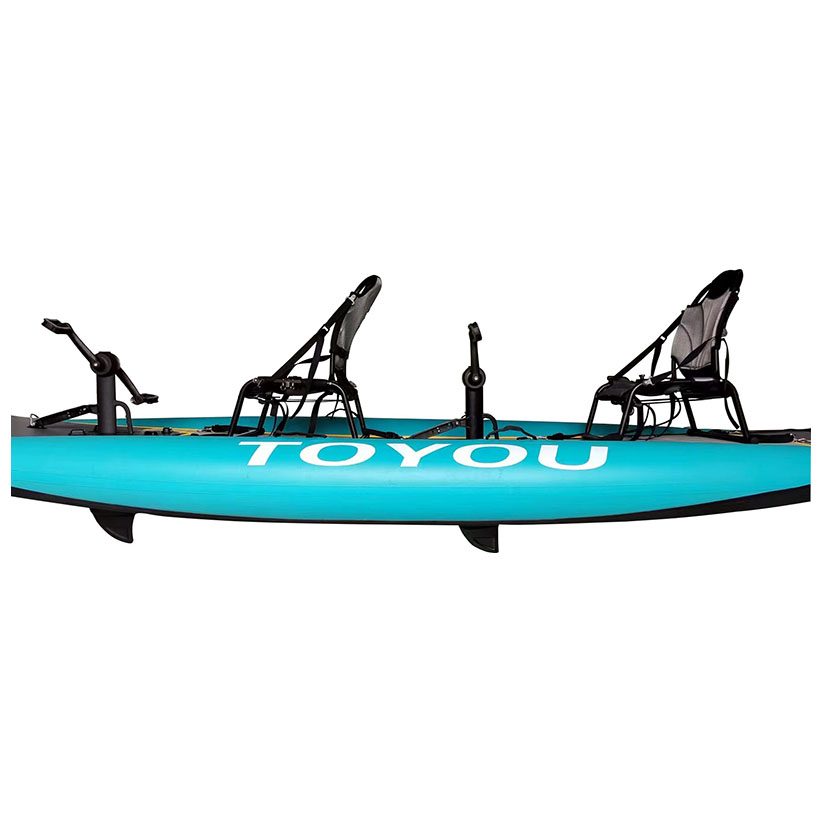Tandem inflatable kayaks are a popular choice for couples, friends, and families who want to enjoy kayaking together. They offer several advantages over traditional hard-shell tandem kayaks, particularly in terms of portability and storage. Here are some key aspects to consider:
Advantages of Tandem Inflatable Kayaks
- Portability
- Easy Transport: Tandem inflatable kayaks can be deflated and packed into a bag, making them easy to transport in a car trunk or as checked luggage on flights.
- Lightweight: These kayaks are generally lighter than hard-shell kayaks, making them easier to carry to and from the water.
- Storage
- Compact: When deflated, they take up very little space, making them ideal for people with limited storage space at home.
- Quick Setup: Most inflatable kayaks can be inflated and ready for use in a matter of minutes with a manual or electric pump.
- Durability
- High-Quality Materials: Modern inflatable kayaks are made from durable, puncture-resistant materials such as PVC or Hypalon, which can withstand rough waters and contact with rocks.
- Multi-Chamber Design: Many models feature multiple air chambers, ensuring that the kayak remains afloat even if one chamber is punctured.
- Stability
- Wide Design: Inflatable kayaks often have a wider design compared to hard-shell kayaks, providing greater stability, which is beneficial for beginners and recreational paddlers.
- Versatility
- Adjustable Seating: Many tandem inflatable kayaks allow for adjustable seating configurations, enabling them to be used solo or tandem.
- Multi-Purpose Use: These kayaks are suitable for various water activities, including calm lakes, rivers, and even mild whitewater conditions.
Disadvantages of Tandem Inflatable Kayaks
- Performance
- Speed and Tracking: Inflatable kayaks are generally slower and have less precise tracking compared to hard-shell kayaks, which might not be ideal for long-distance paddling or open water conditions.
- Rigidity: Despite advances in design, inflatable kayaks may still feel less rigid than their hard-shell counterparts, affecting performance in rough water.
- Inflation and Deflation Time
- Setup Time: While generally quick, the process of inflating and deflating the kayak can be a minor inconvenience compared to simply loading a hard-shell kayak onto a vehicle.
- Weight Capacity
- Limited Load: Tandem inflatable kayaks have a weight capacity limit, which might be lower than that of hard-shell kayaks, limiting the amount of gear you can bring.
Popular Tandem Inflatable Kayak Models
- Sea Eagle 370 Pro
- Features: Lightweight, durable, can handle up to Class III whitewater, includes two seats and paddles.
- Weight Capacity: 650 lbs
- Intex Excursion Pro K2
- Features: High-pressure inflation, removable skegs for deep and shallow water, adjustable seats, built-in footrests.
- Weight Capacity: 400 lbs
- Advanced Elements AdvancedFrame Convertible
- Features: Aluminum ribs for improved tracking, convertible design (can be paddled solo or tandem), adjustable padded seats.
- Weight Capacity: 550 lbs
Tips for Choosing a Tandem Inflatable Kayak
- Intended Use: Consider where you will be using the kayak (calm lakes, rivers, whitewater, or coastal waters) and choose a model suitable for those conditions.
- Weight and Capacity: Check the weight capacity to ensure it can accommodate both paddlers and any additional gear.
- Durability: Look for kayaks made from high-quality, puncture-resistant materials and featuring multiple air chambers for safety.
- Comfort and Features: Adjustable seats, footrests, and storage options can enhance your kayaking experience.
Tandem inflatable kayaks are an excellent choice for those seeking versatility, portability, and ease of storage, making them ideal for casual and recreational use.


